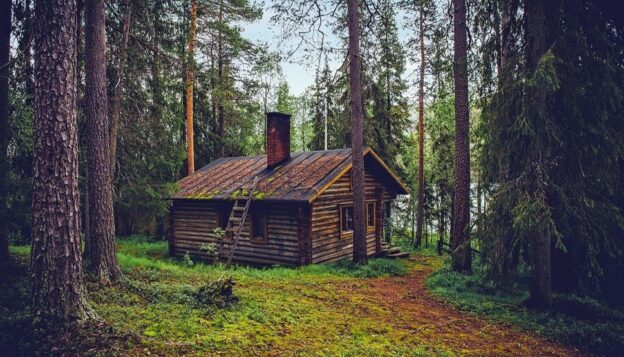This is probably not the best time to bring up home values since many of us have seen the valuation of our homes drop significantly over the last year or so. This is all the more painful if we’ve come to think of our homes more as nest egg than as nest. But since the housing follies are where the current financial meltdown began, I’m going to do it anyway. I’ll begin with a caveat: Economics 101 was not my favorite subject and my understanding of finances is primitive. That said, I know a sound explanation for a complicated problem when I encounter it, so if you are trying to understand how we got into this mess, I recommend you check out a 60 Minutes edition called House of Cards which aired in January this year. This past Sunday (October 5), a 60 Minutes report updated that information, A Look at Wall Street’s Shadow Market. It was chilling.
What I want to explore here is a different kind of value altogether: the value of a roof over your head, whether you own it or rent it. To put it into context: homelessness is on the rise in America. Not only that, homelessness among people in their 50s and 60s who once enjoyed a middle-class income, is also soaring. In No Place to Call Home, the current issue of the AARP Bulletin describes the plight of older people — some 4,000 Americans over the age of 55 — sleeping in their cars in Los Angeles and Santa Barbara, CA, one of the most affluent of American cities, in many instances because they lost their homes to foreclosure. Kind of brings the magnitude of the current crisis home, doesn’t it?
Homeownership has long been the American Dream, the one thing we were willing to save and sacrifice and postpone gratification for. Today, the notion of 20% down and proof that your income could cover loan payments sounds positively antique. One of the things banks always looked for — and these were typically a local branch where you did your other other banking so they knew you — was that your mortgage and real estate taxes not exceed 25% of your gross monthly income. Those were the rules and, like them or not, they concentrated the mind wonderfully.
Some time in the 80s, as homes in many suburbs began to appreciate significantly, the idea of a home as an investment, or something that you could borrow more against, and even ‘flip’ to make money, came into being. It seemed to have happened overnight. One moment, you were perfectly content with a 30 year mortgage at 7% on a property you’d bought for 2.5 times your gross family income (another guideline), and the next, everyone had a strange gleam in their eyes. You couldn’t go to a backyard cookout or have coffee with a friend without real estate being Topic #1. Novelist Ann Beattie wrote of moving from her Virginia suburb to a rural area because she could not stomach this conversation any longer.
The idea that one’s home could become the source of significant wealth was very hard to resist for most people. As long as homes continued to appreciate, salaries were rising and there were tax incentives to trading up, it made sense to do so. The idea was that one day, you could sell that big house, downsize to something smaller, and pocket the difference. Indeed, this was how many intended to finance a portion of their retirement savings, and for many it worked. For a long time, trading up fever ruled. People who felt justified in buying as much house as they could carry were taking on financial risks they might never had considered had it been a different kind of investment.
Some how, we lost sight of the fact that our homes were valuable for the kind of life (as opposed to lifestyle) they provide for us. They represent shelter, safety, refuge, the one place where, as Robert Frost famously wrote, “when you have to go there, They have to take you in.” I read those lines as a deep sense of responsibility to each other and for one another, a feeling of belonging to something larger than ourselves, of putting down roots, of having reasons to give as well as to get. As older Americans, let’s model to others that we can, we must, go home again.
